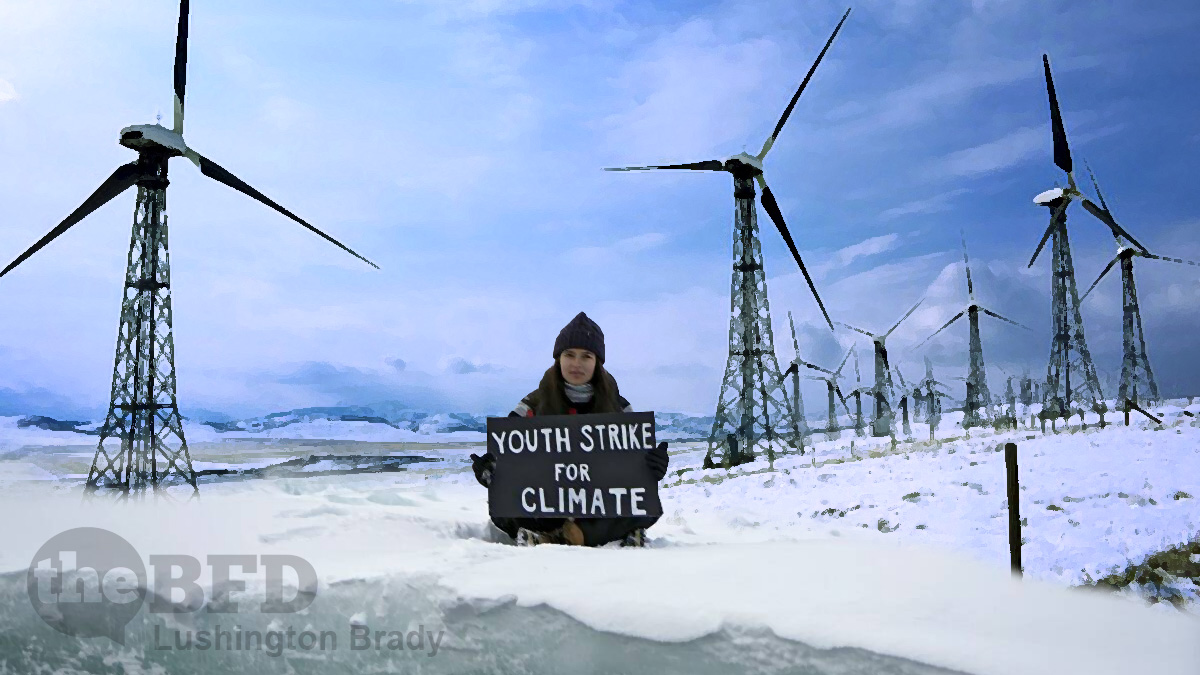In a movement characterised by lies, propaganda and ignorance-dressed-as-certainty, it’s hard to single out any particular falsehood as the One Big Lie of the climate change movement. But, if I had to, I would almost certainly nominate “the science is settled”.
This is a lie, on its own face: science is by definition never settled. Science, it is aptly said, is “organised scepticism”. More to the point, the great philosopher of science, Karl Popper, defined a key characteristic of science as falsifiability: that is, claims are only scientific if they are (at least in principle) capable of being proved wrong. Any “settled” idea is, ipso facto, un-falsifiable — and therefore not scientific.
The conceit that climate science, above all, is anywhere near well-understood enough to be called “settled” is a lie of Brobdingnagian proportions.
Consider the unseasonably cold, wet weather across Australia over recent weeks. It’s not as if climate activists robotically chanting “It’s getting hot in here: are incapable of opening a window.
Still, a single swallow does not a summer make. But the point is that this wet, cold weather is the product of a number of climatic cycles which supposedly “settled” climate science simply does not fully understand.
After thirty years of doomsaying about climate, these variations can still turn near-summer into winter within days and dictate seasonal rainfall.
The cold front that brought snow to Tasmania and flooding rain to NSW in early summer may all be due to the influences of at least three climactic cycles: the El Niño – La Niña effect, the Southern Annual Mode (SAM) and the Madden-Julian Oscillation (MJO).
It’s only in the past week that the Australian Bureau of Meteorology has finally decided that the South Pacific has moved into a La Niña phase, meaning colder temperatures and high rainfall for Australia’s east coast.
Another is the previously mentioned Southern Annular Mode (SAM) which is a belt of strong westerly winds that blow around Antarctica. This belt of winds can shift south – the SAM index turns positive – and when it does in summer, says the BOM, that usually means wetter weather for eastern Australia, but drier than average conditions for western Tasmania (this reverses in winter). As of mid-November the SAM had been positive for several weeks.
The Madden-Julian Oscillation (MJO) can be characterised as an eastward moving ‘pulse’ of cloud and rainfall near the equator that typically recurs every 30 to 60 days. This can also be complex to track but also, the bureau says, looks set to bring above average rain to north-eastern Australia.
Well, okay, what does all this have to do with global warming? How has the mild increase in global temperatures over the past century affected these cycles? Climate alarmists would have us believe that El Niño events (causing hot, dry Australian summers) have and will keep increasing — but, as with so much else, they’re just pulling that out of their backsides.
The short answer is that no one knows. As noted the mechanism behind either an El Niño or a La Niña occurring is little understood. The shifts between the three SAM phases of positive, negative and neutral can happen at any time with the change lasting for several weeks. The MJO, which influences much else in the earth’s climate besides rainfall in northern Australia, has been the subject of considerable research but forecasting it has a long way to go.
Tim Flannery, Australia’s leading climate alarmist famously made a goose of himself by predicting, in line with climate doomsayer’s delusions, that a warming world was going to be a dry hell for Australia. An easy enough prediction to get in the papers, when Australia was in the grip of what appears to be a millennia-long cycle of extreme drought — hilariously wrong, in retrospect.
In fact, the trend over recent decades, and indeed the entire 20th century, has been an overall increase in rainfall.
For its part BOM, on its website, says that ‘rainfall across northern Australia during its wet season (October–April) has increased since the late 1990s. In recent decades there has been a trend towards a greater proportion of rainfall from high intensity short duration rainfall events, especially across northern Australia’.
Spectator Australia
The polar ice-caps are also proving stubbornly resistant to alarmist predictions.
But not as stubborn as the absolute conviction of climate alarmists that the science is “settled” and the world is plunging into a hot, dry, climate hell. Even as the latest international climate conference was forced to turn to gas-fired electricity, just to keep the lights on and the delegates from freezing to death.
It would be a comedy spectacle for the ages if the economic and political consequences weren’t so dire.
Please share this article so that others can discover The BFD

